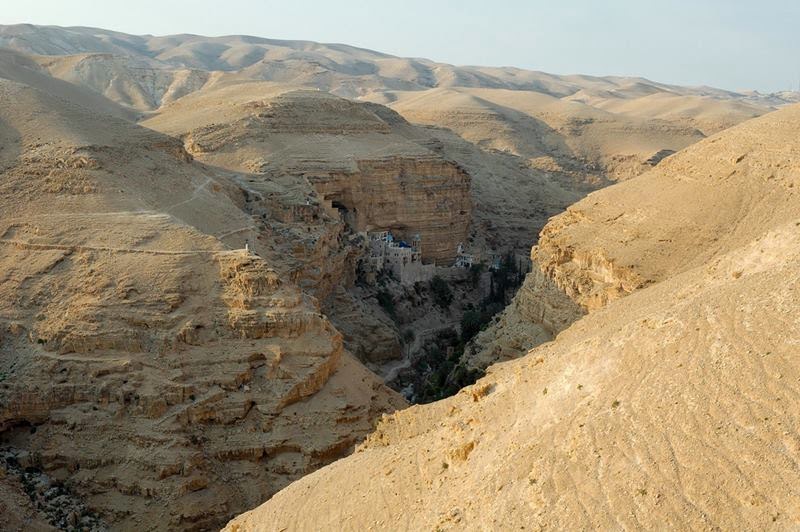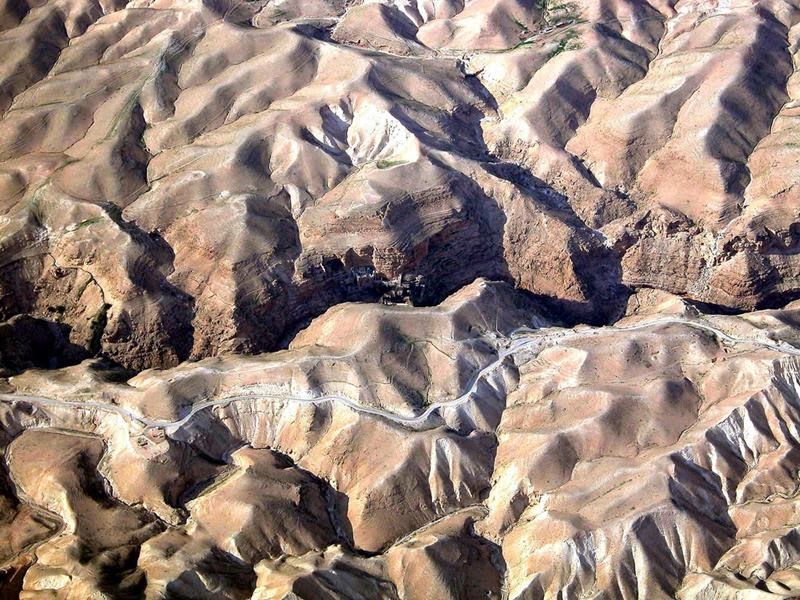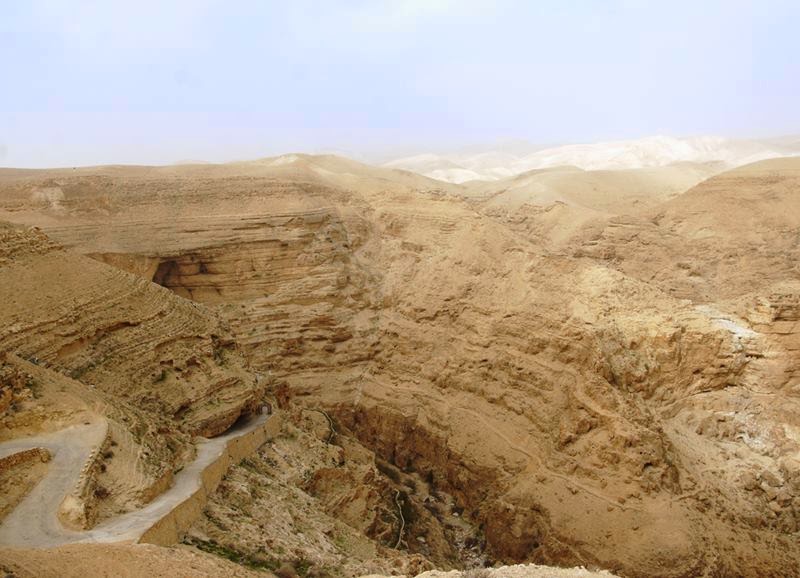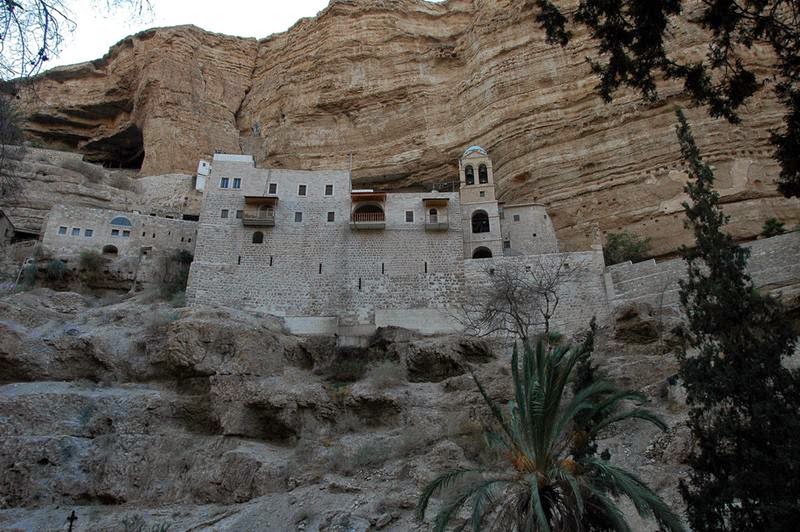The Hanging Monastery of St. George's | The Judean Desert Valley of Wadi Qelt, Israel — Wadi Qelt is a desert valley that runs through the Judean Desert in Israel, reaching near the Dead Sea. Among other historical ruins and ancient synagogues is a curious monastery located on a cliff called Saint George. Wadi Qelt is home to a unique variety of flora and fauna. St. George's Monastery and one of the oldest synagogues globally, Shalom Al Yisrael Synagogue, are located in Wadi Qelt, identified with the biblical "Perath" mentioned in Jeremiah 13:5.
 |
| St George monastery in Israel |
Saint George Monastery
Wadi Qelt endues monasteries and old Christian religious places. Several aqueducts have been found along the stream, the most senior dating to the Hasmonean period from the 2nd century BC. The Wadi Qelt Synagogue, built as part of a Hasmonean royal winter palace, is one of the oldest synagogues in the world. The site was home to the winter palaces of Hasmonean kings and Herod the Great. Israel occupied the area in 1967, parts of the wadi were declared a nature reserve, the Nahal Prat Nature Reserve. Qubur Bani Isra'in is a colossal stone structure that rises from a rocky plateau overlooking Wadi Qelt.
First image credit Michael Panse
 |
| Saint George monastery |
Image credit daytodayblogs.com
St. George Monastery in Israel
St. George Orthodox Monastery or Monastery of St. George of Koziba is a monastery located in Wadi Qelt, in the eastern West Bank. With its ancient chapel and gardens, the sixth-century cliff-hanging complex is active and inhabited by Greek Orthodox monks. The valley parallels the old Roman road to Jericho, the backdrop for the Good Samaritan parable (Luke 10:29-37). The monastery is open to pilgrims and visitors. St. George's Monastery began in the fourth century with a few monks who sought the desert experiences of the prophets and settled around a cave where they believed Elijah was fed by ravens (1 Kings 17:5-6).
 |
| St George monastery |
Image credit daytodayblogs.com
 |
| Monastery in Israel |
Image credit Michael Panse
The monastery was named St. George after the most famous monk who lived at the site – Gorgias of Coziba. Destroyed in 614 A.D. by the Persians, the monastery was more or less abandoned after the Persians swept through the valley and massacred the fourteen monks who dwelt there. The Crusaders made some attempts at restoration in 1179. However, it fell into disuse after their expulsion. In 1878, a Greek monk, Kalinikos, settled here and restored the monastery, finishing it in 1901. The traditions attached to the sanctuary include a visit by Elijah en route to the Sinai Peninsula and St. Joachim, whose wife Anne was infertile, weeping here when an angel announced to him the news of Mary's conception. The bones and skulls of the martyred monks killed by the Persians in 614 A.D. can still be seen today in the monastery chapel.
 |
| Jericho monastery |
Image credit Michael Panse
 |
| St George monastery in Israel |
Image credit Julia Perelman
 |
| Monastery and church of Saint George |
Image credit M Asser
Located just 20 kilometers from Jerusalem on the way to Jericho, close to that of a fast mode is only possible through vehicles. It is advisable to get to a hill overlooking the monastery where the best panoramic views of the valley are obtained.
Image credit daytodayblogs.com
Image credit Charles Meeks
 |
| Monastery and church of Saint George |
Image credit daytodayblogs.com
 |
| St George's monastery |
Image credit Charles Meeks
St. George Monastery in the Judean Desert, Israel — Video
St. George’s Monastery | Map



IS a wonderful place to visit
ReplyDelete